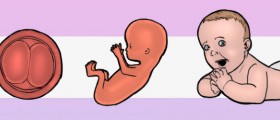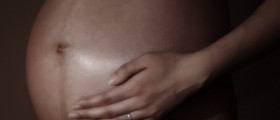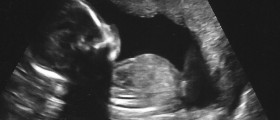Gestation Period for Humans
Gestation period for humans refers to the time during which an embryo or fetus develops inside a mother's womb or the period from conception to birth which is estimated to be 260 days.
Gestation period or the duration of pregnancy cannot be precisely calculated since the exact time of ovulation and fertilization cannot be identified. Therefore, the gestation period is determined from the first day of the last menstrual period. However, other factors also determine the gestation period in humans.

The interval of gestation period in humans is estimated to be around 40 weeks or 280 days. The gestation period in humans may normally last from 37 to 42 weeks or between 259 and 294 days. That means that in average pregnancy, the birth occurs during this period. This is considered to be a healthy pregnancy.
However, when birth occurs before 37 gestation weeks, it is considered pre-term, and if labor happens after 294 days or 42 gestation weeks, it is called post-term. Pre-term birth is risky due to underdevelopment, while post-term is dangerous because of septic poisoning.
- We used routine aggregate data on the GA distribution of singleton live births from up to 34 high-income countries/regions in 1996, 2000, 2004, 2008 and 2010 to study preterm and early term births overall and by spontaneous or indicated onset. Pearson correlation coefficients were adjusted for clustering in time trend analyses.
- Preterm and early term births ranged from 4.1% to 8.2% (median 5.5%) and 15.6% to 30.8% (median 22.2%) of live births in 2010, respectively.
- Countries with higher preterm birth rates in 2004–2010 had higher early term birth rates (r > 0.50, P
Gestation Stages
Different stages of gestation development can clarify the length of the pregnancy period. The gestation period in humans can be divided into three trimesters, each three months long.
The First Trimester
At the beginning of the first trimester, the mature egg is fertilized and implanted into the womb. During the first month, the lungs are formed, the heart starts beating and the spinal cord is growing. In the second month, head and facial features are shaping, including eyes and mouth. Hands and feet are also forming.
At the beginning of the third month, the heartbeat of the fetus can be heard in an ultrasound. The fetus is around 3 cm long, and fingers and toes are formed as well as sexual organs. At the end of the third month, the fetus is approximately 8 cm long and develops immunity to infections thus the risk of miscarriage is lower.
The Second Trimester
At the start of the fourth month, the baby has fine hair covering the body and can curl the fingers. In the fifth month, senses are developed and the skin is protected by a layer of a waxy secretion. At the end of the sixth month, the baby has strong and coordinated movements, and the digestive and immune systems are forming.
The Third Trimester
At the beginning of the last three months, almost every organ, except for the lungs, begins to function. During the seventh month, the brain starts to develop. The movements decrease because of the baby’s large size. The baby is positioned for the birth with its head down. The baby is fully formed in the ninth month and gains around 200 g per week.

















Your thoughts on this
Loading...